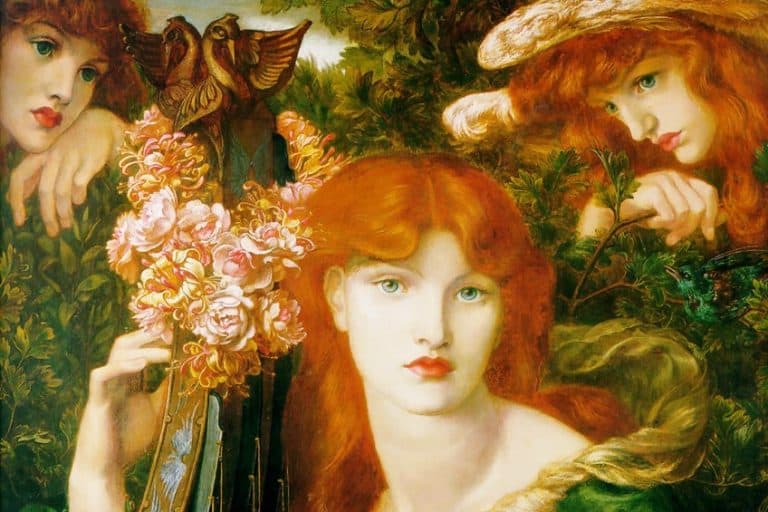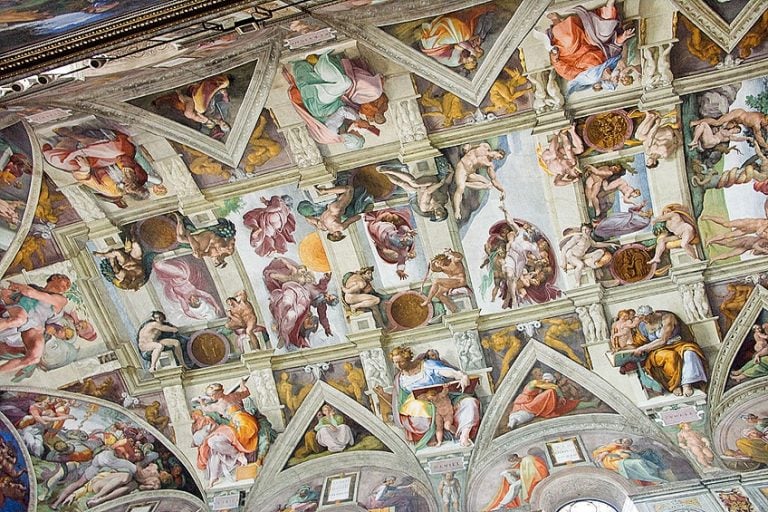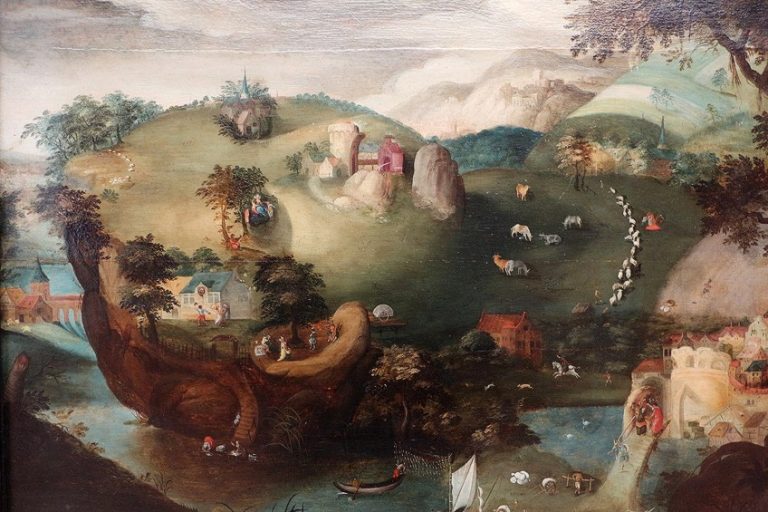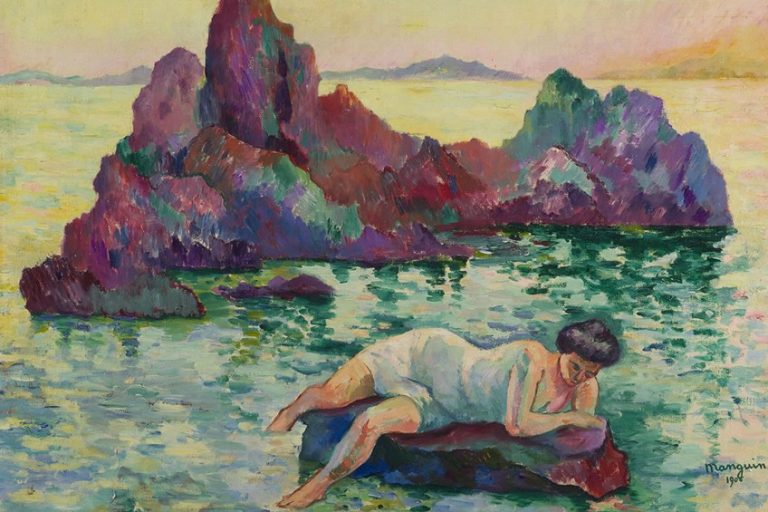Luminism – A Captivating Moment in American Art
Luminism, a captivating movement within 19th-century American art, emerged as a response to the rapid industrialization and urbanization sweeping the nation. Characterized by its emphasis on light, atmosphere, and tranquil landscapes, Luminist paintings evoke a sense of serenity and contemplation. Artists such as Martin Johnson Heade, Fitz Hugh Lane, and John Frederick Kensett employed meticulous attention to detail and mastery of light to create compositions that celebrate the sublime beauty of nature. With its focus on luminous effects and meticulous rendering of natural scenes, Luminism stands as a testament to the transcendentalist ideals of harmony between humanity and the natural world. This article explores the origins, key characteristics, and lasting legacy of Luminism within the rich tapestry of American art history.
Key Takeaways
- Luminism is an American landscape painting style notable for its focus on light and tranquility.
- It originated with the Hudson River School artists and evolved with distinct clarity in light depiction.
- The movement is marked by serene natural scenes, fine tonal gradation, and understated brushwork.
Origins and Influences
Luminism is an American art style that emerged in the 19th century, characterized by a focus on the meticulous rendering of light and its impact on the landscape. This distinctive approach to painting aligns closely with the realism that defines the era’s visual art. It grew from the artistic practices of the Hudson River School but branched out with a more tranquil and clear depiction of light. The movement is notable for its use of light to create atmospheric effects and a sense of depth within the natural setting.

The term “Luminism” was not contemporaneous with the movement itself; it was coined later in 1954 by art historian John Baur. Despite this retrospective labeling, the core group of artists associated with Luminism shared a set of aesthetic priorities— a serene representation of the natural world, a subtle gradation of tones, and a smooth, almost invisible brushwork that enhances the viewer’s immersion in the scene. Notable artists such as John Frederick Kensett, Fitz Hugh Lane, and Martin Johnson Heade are celebrated for their ability to evoke an introspective experience through their precise control of light and form.
Hudson River School
The Hudson River School, established by figures like Thomas Cole and Asher B. Durand, provided a foundational influence on Luminism. Cole, a central figure at the National Academy of Design, inspired a generation of artists, including John Frederick Kensett and Martin Johnson Heade, who embraced the School’s detailed study of nature.
Their focus on light and atmosphere in the landscape became a signature that would greatly inform Luminist aesthetics.
American Art Evolution
American art underwent significant evolution during the 19th century, with artists like Frederic Edwin Church and Albert Bierstadt moving beyond the Hudson River School to develop styles that enhanced the interplay of light and shade, creating serene and meticulously detailed depictions of landscapes. This attention to realism and light transitions was pivotal in the manifestation of Luminism.

Transcendentalism and Romanticism
Luminism was also notably shaped by the philosophical currents of Transcendentalism and Romanticism. Artistic works demonstrated an appreciation for the spiritual elements of nature, reflecting a belief similar to Transcendentalist thought that godliness can be found within the natural world.
All the while, the Romantic inclination spotlighted the emotionality and sublime aspects of the American landscape.
Genre painting
19th-century American genre painting offered a straightforward, often naïve portrayal of everyday scenes that contributed to Luminist sensibilities. The ordinary subjects in these works received an elevated sense of calm and order through the refined manipulation of light, a technique that Luminists would infuse into their own landscapes.

Printmaking and Photography
The emergence of photography and advancements in printmaking informed Luminist techniques as well. Artists were able to study light effects with a new exactness, which translated into paintings that emphasized clarity and depicted scenes with photographic precision.
These mediums provided a tangible reference for artists striving to capture the transient effects of light on canvas.
Aesthetic Characteristics
The aesthetic hallmarks of Luminism are deeply tied to its special handling of light and attunement to tranquil scenes. This style exhibits a distinct quality of calm and stillness through precise techniques and compositions.

Light and Atmosphere
Luminism is renowned for its meticulous depiction of light and its ability to shape the atmosphere within a painting. Artists used subtle gradations of light to create the illusion of a diffused, ethereal glow. Employing an aerial perspective, they enhanced the depth of the scene and the realism of the atmosphere, often portraying a hazy sky or reflective water surfaces in their work.
The light effects in these paintings are typically soft, emphasizing the calmness and serenity of the natural landscape.
Technique and Brushwork
The brushwork in luminist style is characterized by an almost invisible quality. Artists avoided evident brushstrokes to ensure a smooth, seamless texture that enhances the painting’s tranquil effect. While detail is present, it’s conveyed in such a polished manner that the viewer’s focus remains on the overall impression of light and form. The technique contributes to an image that some may compare to a high-resolution photography, with a focus on tranquility and form rather than overt drama.

Subject and Composition
Luminism often explores American landscape painting, with particular emphasis on seascapes and vast stretches of the American wilderness. The compositional structures are usually horizontal, emphasizing the expansiveness of the scene. This structure works in tandem with the luminist style’s light effects to underscore the grandeur and stillness of nature.
In terms of content, the paintings often feature calm waters, ships at rest, and the quiet intersection between sky and land, further accentuating the peaceful and meditative quality of the luminist aesthetic.
Notable Luminists
The Luminist movement was distinguished by its emotive and nuanced treatment of light and atmosphere. This section will introduce prominent Luminist painters and their significant contributions to the art style.
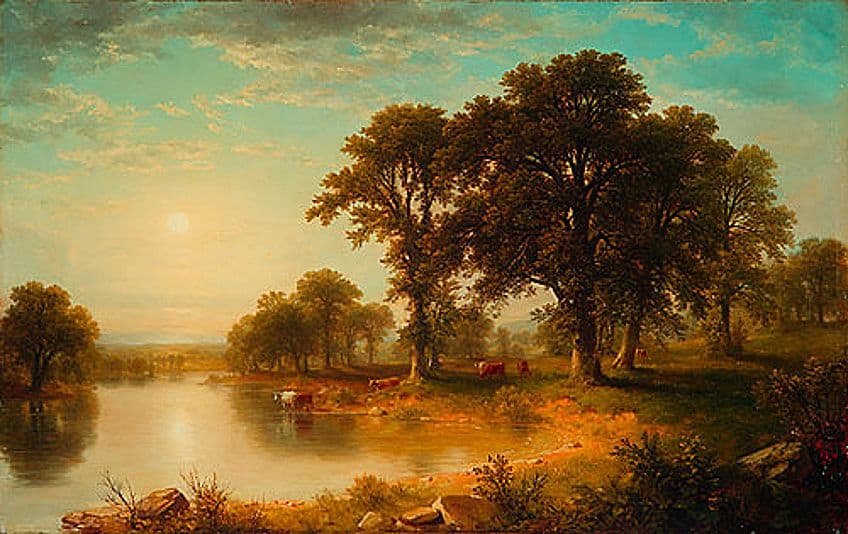
John F. Kensett and His Circle
John Frederick Kensett was a pivotal figure in the American Luminist movement. Kensett’s artworks, such as Shoreline at Newport, are renowned for their serene and reflective qualities, embodying the tranquility that is central to Luminism.
His influence extended to a circle of artists who shared his refined approach to capturing light.
- Sanford Robinson Gifford: A member of Kensett’s circle and a leading Luminist, Gifford’s landscapes stand out for their soft, atmospheric effects and subtle use of lighting, particularly in works like Lake Scene in Mount Chocorua.
- Jasper Cropsey: Though more closely associated with the Hudson River School, Cropsey’s paintings at times reflected the serene light and meticulous detail seen in Luminist works.
Fitz Hugh Lane and Contemporaries
Fitz Hugh Lane, also known as Fitz Henry Lane, was a preeminent Luminist artist whose marine paintings, such as Brace’s Rock, Eastern Point, are characterized by a crystal-clear light and a placid sea, capturing the stillness and clarity of light Luminism is known for. Lane’s devotion to maritime subjects set him apart from his contemporaries.

Frederic Church and Followers
Frederic Edwin Church is often considered one of the masters of the Luminist movement, even as he is more famously known for his work as a member of the Hudson River School. His paintings, such as Heart of the Andes, showcase a meticulous attention to light and atmosphere, aligning with the aesthetic values of Luminism.
Church’s work inspired a number of followers who sought to capture the boundless possibilities of light in landscape painting.
Legacy and Critique
Exploring the impact of the Luminism movement and its relevance in the modern artistic landscape reveals how this distinct style of the 19th century intertwines with contemporary art. This section delves into how the techniques and philosophy of Luminist artists extend to present-day practices and critiques.

Luminism in Modern Context
Luminism, recognized by its meticulous attention to the subtleties of light and atmosphere, was not formally acknowledged until art historian John I. H. Baur introduced the term in 1954. This era of American landscape painters, while initially overshadowed by the grandeur of the Hudson River School, gained prominence through its distinct celebration of clarity and tranquility.
Barbara Novak, among other scholars, pointed out its inextricable ties to nationalism and the experience of the American landscape, noting its alignment with broader cultural and philosophical paradigms like quietism and the pursuit of a poetic experience.
Influence on Contemporary Art
The aesthetic principles of the Luminist movement have rippled through time, influencing several modern art styles, such as photorealism, and Tonalism. Steven DaLuz, for example, incorporates Luministic techniques to capture and portray light and its ethereal qualities in his works. Art historians often compare the serene quality of Luminist works to that of British art and Dutch painting, noting the shared emphasis on the viewer’s emotional experience.
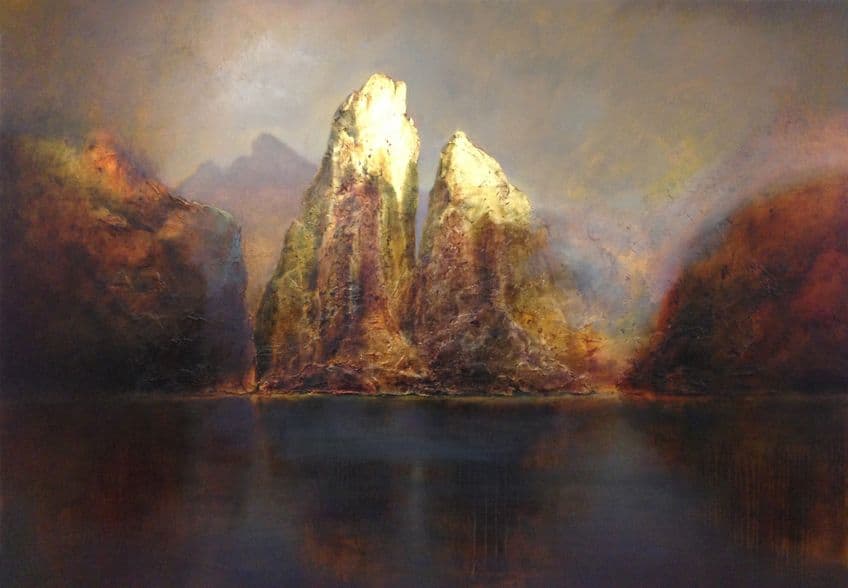
Luminism Today
Present-day art enthusiasts can immerse themselves in the quietude of Luminism through key collections such as those at the National Gallery of Art and Metropolitan Museum. Exhibitions such as the one at the Metropolitan Museum offer a catalogue that showcases the enduring allure of Luminist artworks, like those by George Caleb Bingham. Luminist influences can also be found in the works of contemporary artists like James Doolin and April Gornik, who exemplify the Luminist affinity for American scenery and the intricate rendering of light. Occasionally, these contemporary interpretations transcend traditional canvas work, employing methods such as printmaking and engraving, which echo the technical precision of Luminist artists.
Luminism remains a profound and enduring chapter in the annals of American art history. Its ability to capture the ethereal quality of light and the tranquility of nature speaks to a timeless yearning for harmony and transcendence. Through the meticulous brushwork and nuanced understanding of atmospheric effects, Luminist painters transformed landscapes into poetic reflections of the human spirit. As we reflect on the legacy of Luminism, we continue to find solace and inspiration in its evocative representations of the natural world, reminding us of the enduring power of art to illuminate the depths of our collective consciousness and to connect us with the sublime wonders of existence.
Frequently Asked Questions
Who Are the Most Renowned Artists Associated With the Luminism Movement?
The most renowned artists associated with the Luminism movement include Fitz Henry Lane, John Frederick Kensett, and Martin Johnson Heade. Their works are noted for their serene depiction of light and atmosphere.
How Does Luminism Differ from the Impressionism Art Movement?
Luminism is characterized by smooth, almost invisible brushstrokes that create tranquil scenes with a focus on the effects of light, while Impressionism is known for its visible, quick brushstrokes to capture the essence of a moment and the changing qualities of light. Luminism often portrays a more controlled and idealized depiction of nature compared to the more spontaneous and dynamic approach of Impressionism.
What Was the Relationship Between the Hudson River School and Luminism?
The Hudson River School preceded Luminism and is considered its antecedent. While both movements showcase the grandeur of the American landscape, Luminism is seen as an evolution that placed a heavier emphasis on the interplay of light and atmosphere in their depictions of the natural world. Artists associated with Luminism were also related to the Hudson River School but adopted a unique clarity of light in their works.
Isabella studied at the University of Cape Town in South Africa and graduated with a Bachelor of Arts majoring in English Literature & Language and Psychology. Throughout her undergraduate years, she took Art History as an additional subject and absolutely loved it. Building on from her art history knowledge that began in high school, art has always been a particular area of fascination for her. From learning about artworks previously unknown to her, or sharpening her existing understanding of specific works, the ability to continue learning within this interesting sphere excites her greatly.
Her focal points of interest in art history encompass profiling specific artists and art movements, as it is these areas where she is able to really dig deep into the rich narrative of the art world. Additionally, she particularly enjoys exploring the different artistic styles of the 20th century, as well as the important impact that female artists have had on the development of art history.
Learn more about Isabella Meyer and the Art in Context Team.
Cite this Article
Isabella, Meyer, “Luminism – A Captivating Moment in American Art.” Art in Context. March 11, 2024. URL: https://artincontext.org/luminism/
Meyer, I. (2024, 11 March). Luminism – A Captivating Moment in American Art. Art in Context. https://artincontext.org/luminism/
Meyer, Isabella. “Luminism – A Captivating Moment in American Art.” Art in Context, March 11, 2024. https://artincontext.org/luminism/.




